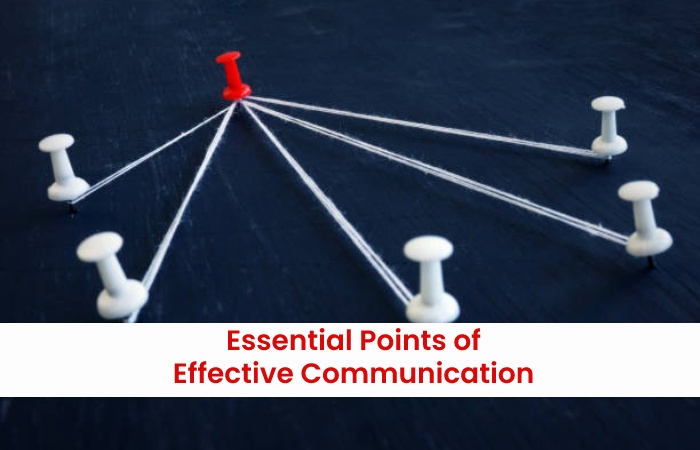Share This Article
About Effective Communication
Effective communication is advantageous to marketing. It makes marketing campaigns noteworthy and fosters a close-to-home connection between the marketer and the target audience. Whenever a piece of communication is direct, significant, beneficial, and convincing, it moves the audience — prospect — to the consumer.
Essential Points of Effective Communication

- For effective communication, marketers, instead of just focusing on promotion, are utilizing integrated marketing communication. Effective communication must be both creative and effective.
- New thoughts which created emotional touch points with consumers demonstrated productivity. Some of the time, irreverence produces new ideas for effective communication.
- When it involves business achievement, instants of effective communication abilities can’t be busy too lightly.
- Everything, without question, revolves around informing. Whenever a piece of communication is direct, relevant, beneficial, and convincing, it moves you — the listener or reader — to activity.
- Moving individuals isn’t magic — everything revolves around effective communication. However, anybody can communicate effectively by utilizing a simple tool with an uncanny capacity to pinpoint why any message works or doesn’t and how to develop it further.
- It’s known as the 4Cs Model, which represents Comprehension, Connection, Credibility, and Contagiousness. The 4Cs Model was initially growing as an appraisal tool for evaluating the effectiveness of advertising and marketing materials.
- Brands like Dunkin’ Doughnuts, Smooth Cleanser, and Breyers Frozen Ice Cream utilized the 4Cs Model to develop marketing campaigns that addressed individuals and built an emotional connection with their consumers.
The 4Cs Model of Effective Communication
A 4Cs model is a valuable tool for unbiasedly evaluating the effectiveness of many types of communication: what’s working, what isn’t, and why. For example, the 4Cs can consider marketing, business, political, entertainment, and regular ordinary individual communication, from email and publishing content to a blog to relationship talk.
The First C: Comprehension
Does the audience receive the message, the principal idea, and the point? What does the message immediately communicate? Could the audience, at any point, play the message back? It affirms that they ―get it‖, and the first C is working. The following are three hints for better comprehension: Make the message understood and sharp. Reiteration makes a difference. Tell them everything you will say to them; next, tell them; and afterwards, let them know everything you said. Keep it straightforward – don’t dive excessively deep.
The Second C: Connection
Making a connection with an imparted idea or message implies that the audience ―gets it, ‖ as well as that it impacts them, has meaning and importance for them, and as a rule triggers a nonsensical or emotional reaction: disappointment, excitement, anger, passion, satisfaction, joy, trouble, etc. When the connection is there, it will start new ways of behaving and activities.
The Third C: Credibility
The audience must accept who is saying it (the brand or messenger’s voice), what is inside, and how things are displayed. In any case, any connection starts to separate – right away. Credibility is the primary C because the audience may grasp a communicator’s message and even associate with it emotionally. So promptly pivot and say that approaching from this specific source: organization, political candidate, manager, whatever, they aren’t buying it.
The Fourth C: Contagiousness
In communications, contagiousness is something to be thankful for the thing. It would help if you had your audience catch the message, ‖ go for it and spread it around. Consider the last time you saw a television promotion that was so entertaining or sharp that you examined it with your companions, found yourself re-establishing it, or rehashed the motto or expression in discussions. That is contagiousness. A message must be energetic, new, unique, and vital to be contagious. It should evoke a striking emotional reaction, have ―talk‖ potential, spur the target to follow through with something, and inspire an evident response.
Conclusion
Hence, effective communication assists marketers in accomplishing their goals. Anybody can achieve effective communication by utilizing a primary device with an uncanny capacity to pinpoint why any message works or doesn’t work and how to develop it further. With the assistance of the 4 C model, one can survey the effectiveness of marketing communication messages. Brand messages should be creative, relevant, innovative and advantageous for effective communication.
Also Read – Better Communication – About, 3 Phases, And More



